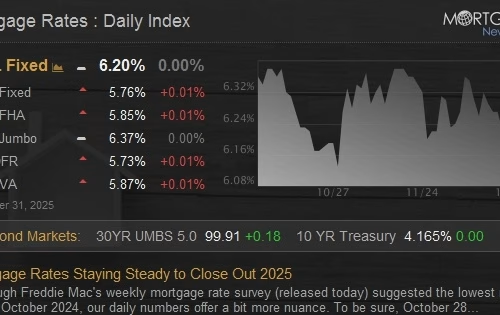Article Summary
The debate over housing affordability in Canada has intensified, with experts and policymakers offering differing views on whether home prices need to fall to make housing more accessible. Gregor Robertson, Canada’s housing minister, emphasizes increasing supply and stabilizing the market, while economist Mike Moffatt argues that price reductions are essential for restoring affordability. The federal government is focusing on reducing construction costs and boosting housing starts, but challenges remain in balancing homeowner equity and addressing the middle-class housing crisis. The issue is further complicated by regulatory barriers and the political influence of homeowners.
What This Means for You
- Homebuyers: Expect continued challenges in affordability unless significant policy changes are implemented to reduce home prices or increase wages.
- Homeowners: Be cautious of policies aimed at lowering home prices, as they could impact your property’s equity and long-term financial planning.
- Renters: Advocate for policies that address rental affordability and shift the narrative away from homeownership as the only path to financial security.
- Future Outlook: Without coordinated efforts across federal, provincial, and municipal governments, housing affordability is unlikely to improve significantly in the near term.
Ottawa has to allow home prices to fall to make housing more affordable, experts say

By Craig Lord
Gregor Robertson, the former mayor of Vancouver who was elected to the House of Commons in April, sparked the debate after he was sworn in as housing minister earlier this, when a reporter asked him whether he thinks home prices need to fall.
“No, I think that we need to deliver more supply, make sure the market is stable. It’s a huge part of our economy,” he said.
Robertson added that Canada lacks affordable housing and championed Ottawa’s efforts to build out the supply of homes priced below market rates.
Mike Moffatt, founding director of the Missing Middle Institute, had a different answer when asked whether housing can be made more affordable for the average Canadian without a drop in market values.
“The short answer is no. It’s simply not possible to restore broad-based affordability to the middle class without prices going down,” he said.
Moffatt crunched the numbers last month on how long it would take for housing to return to 2005 levels of affordability if the average home price holds steady while wages grow at a nominal pace of three per cent annually.
Across Canada, he said, it would take 18 years to return to more affordable home price-to-income ratios — while in Ontario and British Columbia it would take roughly 25 years.
In B.C. and Ontario, Moffatt said, wages and home prices have become so detached from one another that it’s not “realistic” to rely on wage growth to catch up to housing costs.
While Moffatt said he welcomes policies that encourage more housing for vulnerable Canadians and those experiencing homelessness, efforts to build more below-market housing units won’t address the “middle-class housing crisis.”
Days after Robertson weighed in, Prime Minister Mark Carney was asked the same question. Rather than offering a yes-or-no answer, he asserted instead that he wants “home prices to be more affordable for Canadians.”
He cited Liberal election campaign pledges to drop the GST on new homes and offer incentives to municipalities to cut development charges in half.
The Liberals are looking to lower the cost of homebuilding with the aim of doubling the pace of housing starts in Canada. The government wants to scale up the use of prefabricated parts and other technological advances to streamline housing development.
Carney said that this boost in supply would “make home prices much lower than they otherwise would be.”
Moffatt said he agrees that lowering the cost of homebuilding would help to make homes more affordable.
In fact, he said, if the cost of building doesn’t go down and if home prices stagnate or decline, development will immediately cease to be profitable for builders, causing housing starts to dry up.
“I think that should be the primary focus of all three orders of government … figuring out how we can reduce the cost of home construction in order to create affordability and to lower prices,” he said.
Concordia University economist Moshe Lander agrees with Moffatt that home prices must come down if the government hopes to see broad affordability restored to the market over the next generation.
But he also questions whether the federal government should be the arbiter of housing affordability in the first place, given that so many of the political decisions are out of its control.
Lifting regulatory barriers to boosting supply is largely a matter for provincial and municipal governments, as are efforts to encourage more students to develop skills in the trades.
“And so for the federal government to say, ‘We’re going to try and incentivize this,’ I think they’re going miss the mark in whatever they’re trying to do because really, at the end of the day, it’s not their issue,” Lander said.
Lander said he also understands why politicians of all stripes are reluctant to come out in favour of lowering home prices.
Any explicit government effort to bring down housing prices down would be seen as an attack on homeowners’ equity — an asset many use to fund retirements or other long-term savings as they pay off their mortgages.
“Homeowners will not accept it,” Lander said. “And you risk alienating a very sizable and influential voting bloc.”
At the local level, he said, politicians tend to seek the support of homeowners because — unlike renters — they tend to stay put in a riding or district.
Lander said that most efforts to win renters’ votes tend to be “tepid” at best and “counterproductive” at worst. Policies that target the demand-side of the equation — helping Canadians become homeowners — tend to put upward pressure on home prices at the same time, he said.
Lander said part of the path to affordable housing has to be a shift away from the narrative that Canadians have been fed for generations — that home ownership is a lofty goal to aspire to and renters are “second-class citizens.”
“I don’t think that we’re being clear with society that this is what that might look like,” he said.
Visited 217 times, 217 visit(s) today
affordability Canadian home prices home prices housing affordability Mark Carney Missing Middle Institute real estate market The Canadian Press
Last modified: May 24, 2025
People Also Ask About
- Can increasing housing supply alone solve affordability issues? No, experts argue that reducing home prices is also necessary to restore affordability.
- How long will it take for housing to become affordable again? In some regions like Ontario and B.C., it could take up to 25 years without significant policy changes.
- What role do provincial and municipal governments play in housing affordability? They are crucial in lifting regulatory barriers and encouraging skilled trades to boost supply.
- Why are politicians hesitant to lower home prices? Lowering prices could alienate homeowners, a significant and influential voting bloc.
Expert Opinion
Mike Moffatt and Moshe Lander highlight the need for a multi-faceted approach to housing affordability, emphasizing that reducing construction costs and home prices are critical. However, the political and economic complexities of the issue mean that meaningful change will require coordinated efforts across all levels of government and a shift in societal attitudes toward homeownership and renting.
Key Terms
- Housing affordability in Canada
- Canadian home prices trends
- Middle-class housing crisis
- Reducing construction costs
- Home price-to-income ratios
- Federal housing policies
- Regulatory barriers in housing
ORIGINAL SOURCE:
Source link
Automatic Mortgage Calculator
Welcome to our Automatic Mortgage Calculator 4idiotz! Please just add your figures in the correct sections below and the Automatic Mortgage Calculator will automatically calculate the results for you and display them at the bottom of the page.




